Objective:
- Can we lift millions of people out of poverty while controlling carbon emissions
Case:
Methodology:
- MRIO
- Matching GTAP and WBCD
- $B^{2n+1} = diag(R^{2n+1})B^{2n}$
- $B^{2n+2} = B^{2n+1} diag(S^{n+1})$
Data Source: partial open
- Expenditure dataset: WBCD, 116 countries and 201 expenditure bins
- GTAP
Findings:
- The highest country-average carbon footprints in high-income countries
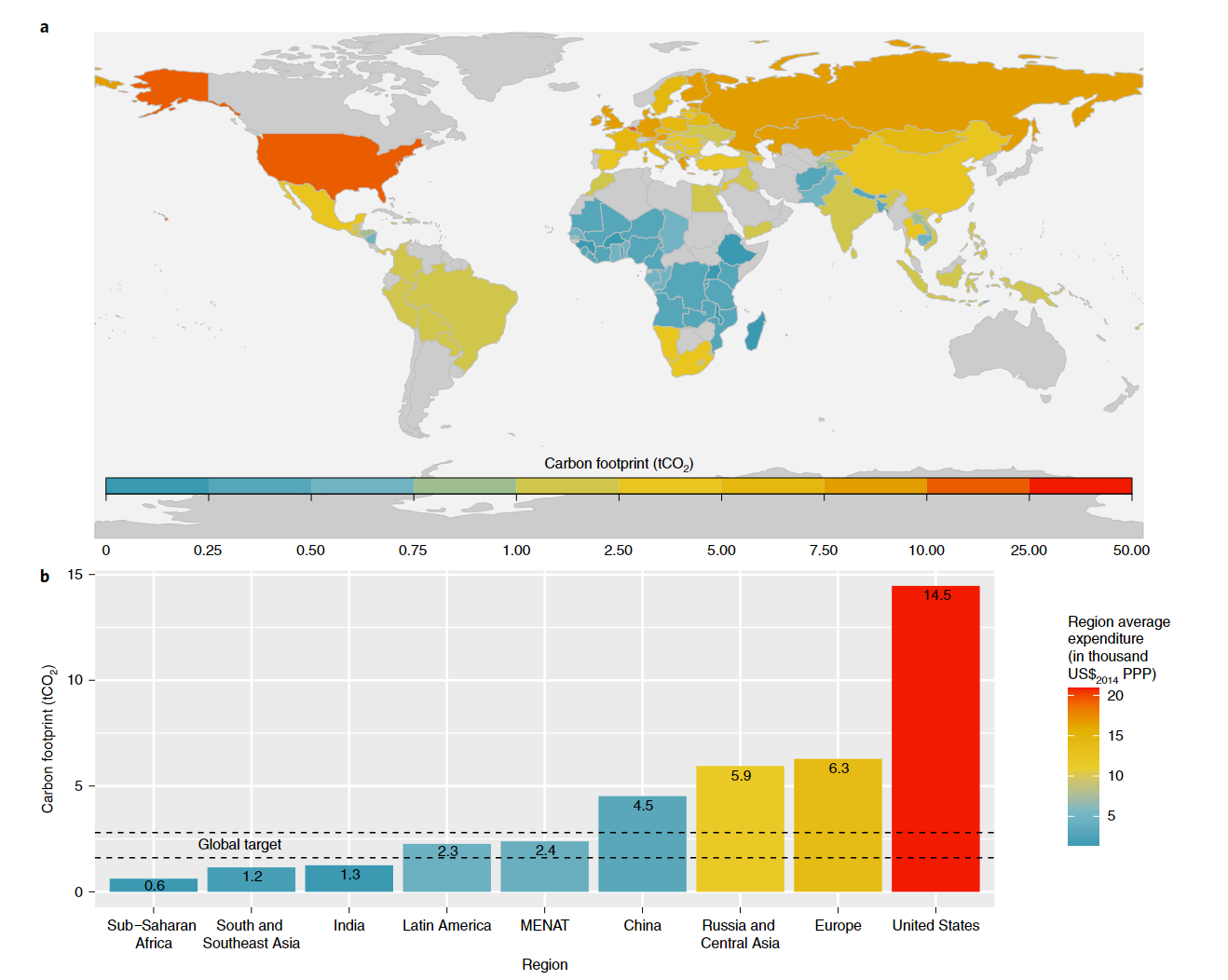
- The consumption of the bottom half of global carbon emitters was contributing only one-tenth of global carbon emissions, while consumption of the top 10% was contributing almost half of all emitted CO2
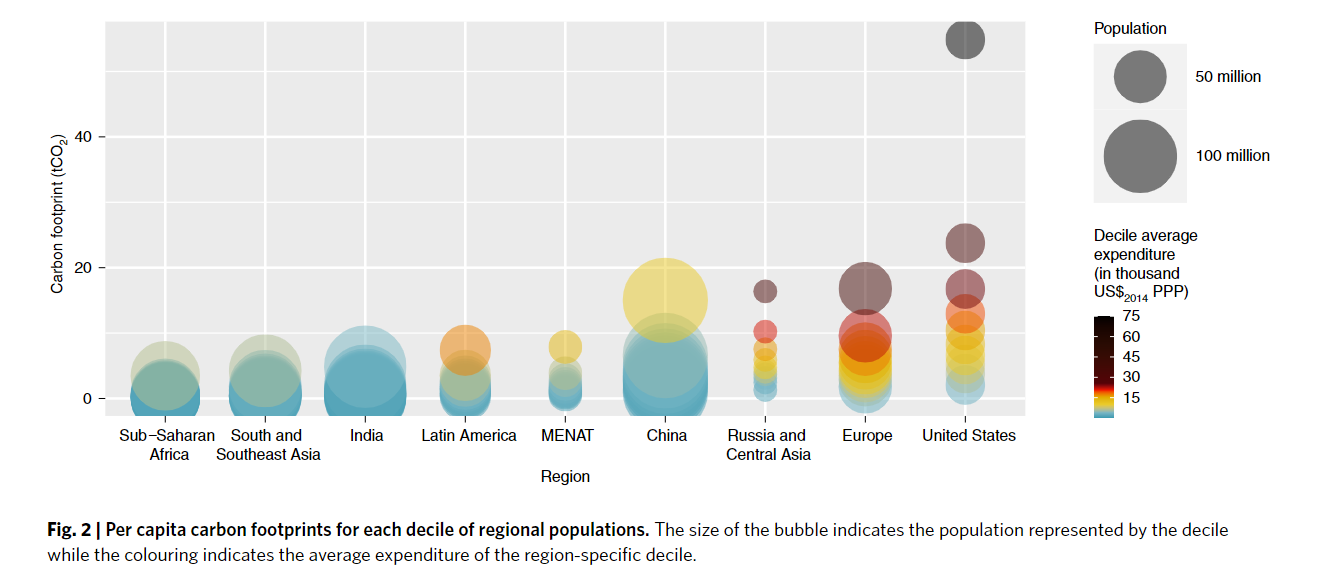
- Consumption of people living in poverty is associated with an especially small part of carbon emissions
- Poverty alleviation is possible with minor increases in global carbon emissions
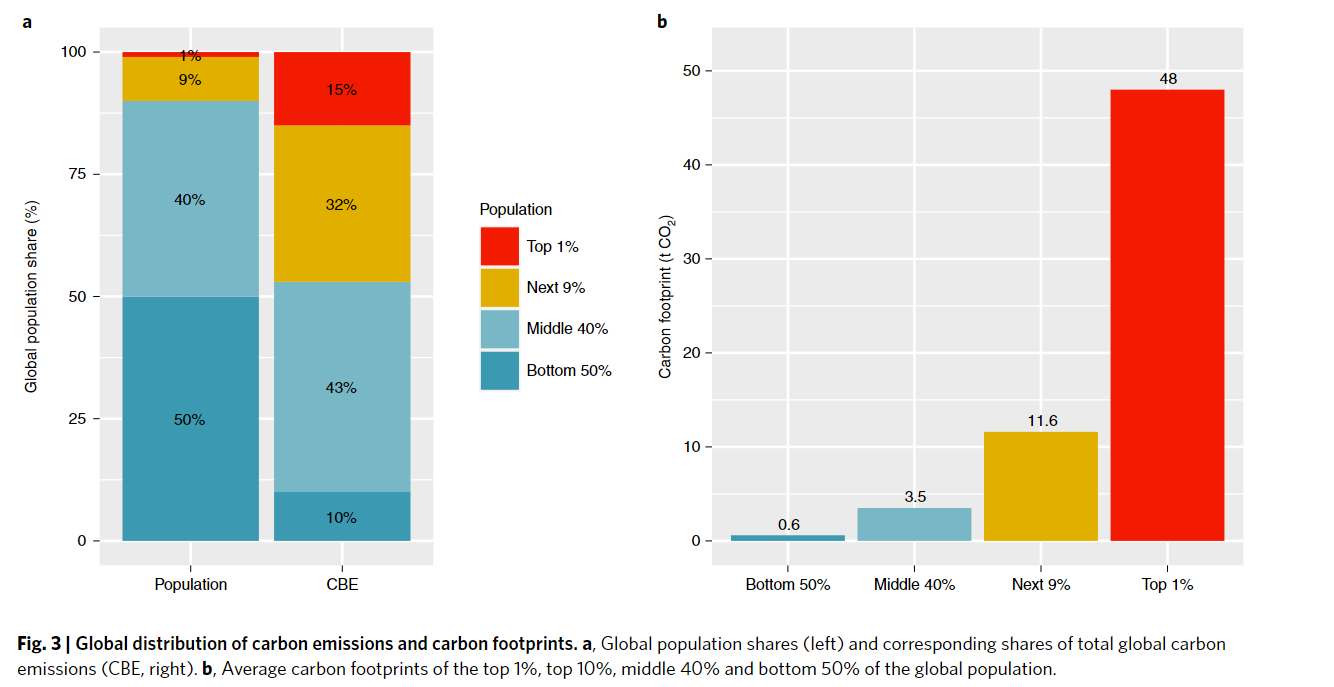
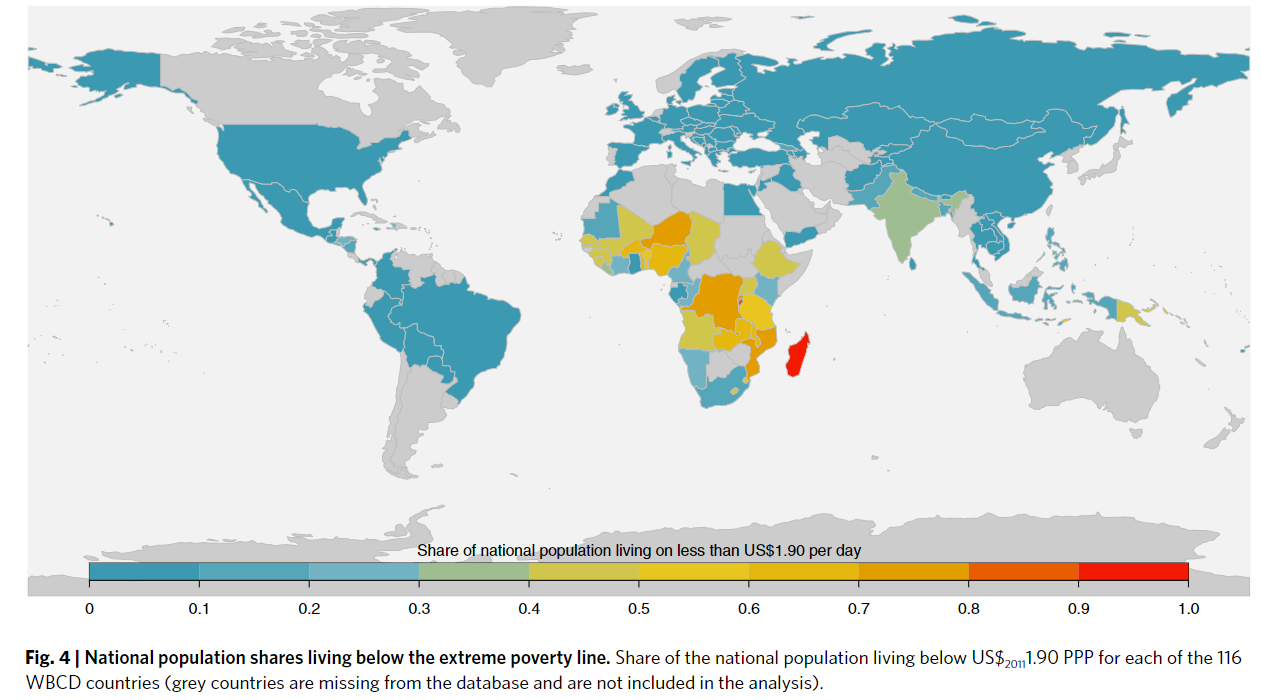
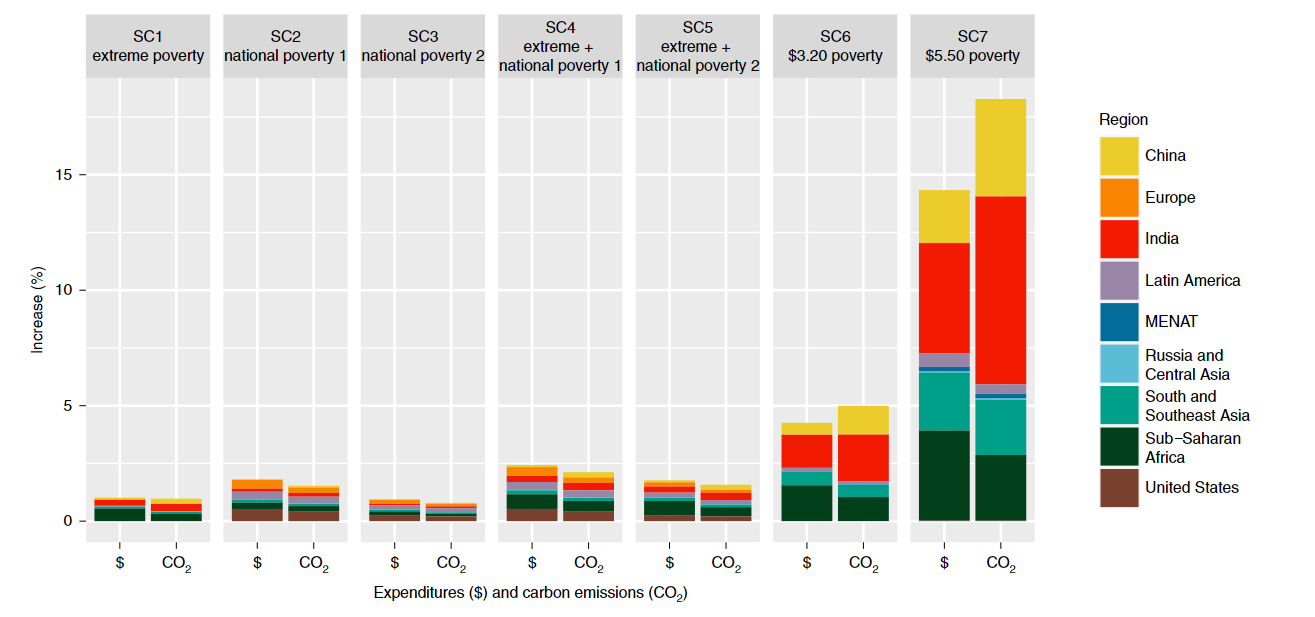
Coding Reference:





